Red British cats: description, rules of keeping and breeding

Ginger British cats quickly spread throughout the world at the end of the 19th century from England. The animals gained popularity among aristocrats for their plush hair and regal large eyes. Compared to other breeds, the British are distinguished by a large, muscular physique, but, despite the dense structure, they do not lose their gracefulness. With proper observance of the rules of keeping, a pet can live from 13 to 16 years.
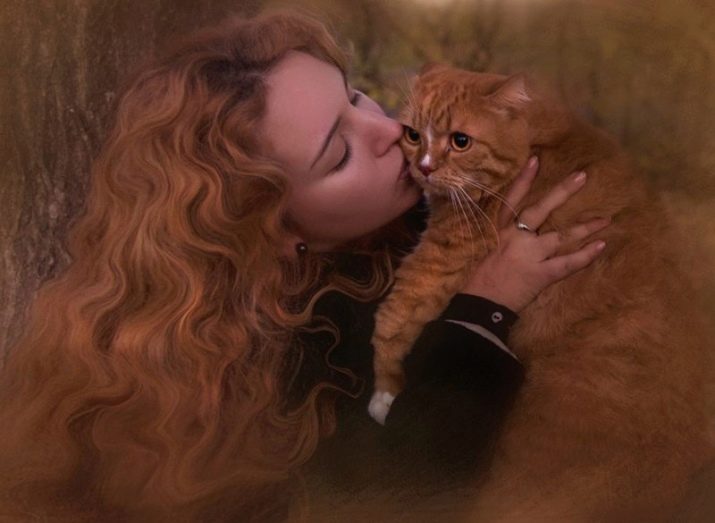
Description
The most popular are red British cats with golden, honey, turquoise and green eyes. The coat is colored red with a possible pattern of stripes on the forehead, tips of the paws and the tail of a silvery or light shade. The paw pads and nose are brick colored. A solid color without spots and lines is rare - such a coat is typical for kittens. As they grow older, 97% of British redheads have patterns on their coats.
The head of cats of this breed has a round, regular shape. On the front of the wide skull there are large eye sockets, a small, straightened nose, and an even chin. The classic British are characterized by the presence of full cheeks or flews.
The head rests on a short, massive neck. The ears of British cats are small in size, their tips are rounded and set low. There are no lop-eared cats among the British.
A healthy pet has a dense physique with developed skeletal muscles. The large rib cage merges smoothly into short, strong legs. The thick tail tapers towards the tip. The coat is short and thick.
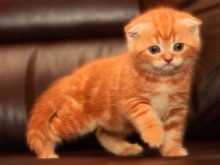
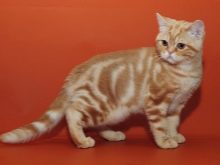
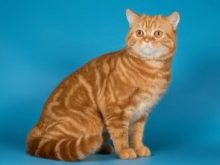
In addition to the red shade of the coat, there are at least 30 colors of British cats. The most common colors are:
- cream;
- chocolate;
- purple or pink-blue;
- red, red;
- black;
- blue or smoky;
- white.
The color of the coat does not have to be solid - the patronizing color can consist of several shades, for example, as in the tortoiseshell variant. In these cats, the hair throughout the body is represented by patches of 2 colors. It can be combined black and red, there is an alternation of cream and white.
The weight of a large male can reach 6-8 kg, while the weight of a female does not exceed 2-4 kg. With castration, animals gain weight, so cats can weigh up to 9.5 kg and cats up to 6 kg.
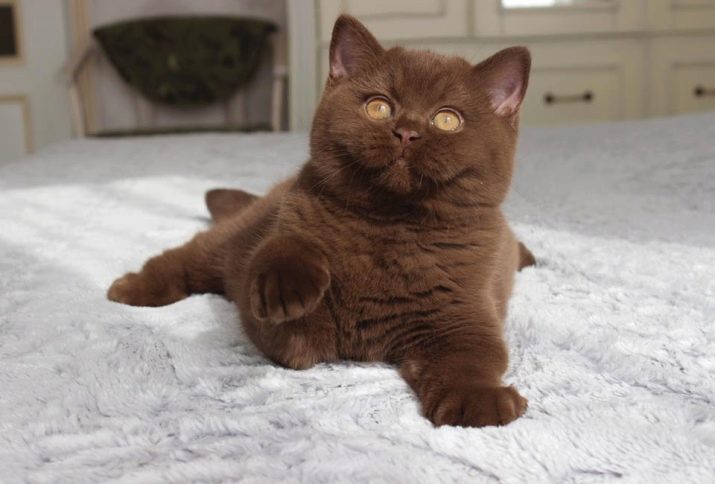
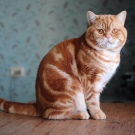
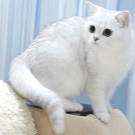
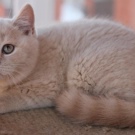

Character traits
British cats are distinguished by their restrained, docile nature. They lead a sedentary and calm lifestyle, trying to demonstrate their independence to the owner. Pets love attention. Cats are often lazy and detached watching what is happening, rarely showing playfulness and affection.
Despite the cold disposition, the British quickly adapt to living next to a person. It is easy to train them to the tray, place, method and time of feeding. At the level of intuition, cats understand what is forbidden to do. To avoid unpleasant surprises for an ill-bred pet, it is recommended to buy kittens and train them from childhood. Adult cats are difficult to habituate.
Animals do not show aggression towards humans or other pets, therefore they easily live next to dogs and are patient with children. In a good mood, the British can play with a small child. At the same time, they do not like loud noise and bustle, they prefer loneliness in an empty room. Like all other cats, The British are clean and spend a quarter of their time washing.


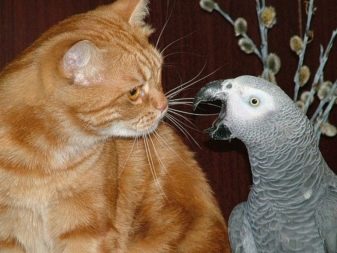
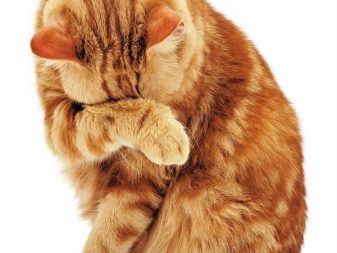
Conditions of detention
A British kitten requires special care and constant care, but an adult pet can live on its own. The first household items will be a tray, as well as a bowl and scratching post. Pet toilet training should be done in childhood. It is recommended that you purchase a large litter box to make it easier for your cat to adapt. It is important to remember that the British are actively digging up the litter, so the container for the pet's natural needs must be quite deep.
If the scratching post does not arouse any interest in the pet, claws should be trimmed with special scissors once every 2 weeks. The procedure must be carried out without fail before mating or before an exhibition. A rubber or hard bristle brush is required to brush and remove excess hair.
You can not take care of the Briton's skin with a hard metal tool, so as not to damage the skin and undercoat of the pet.
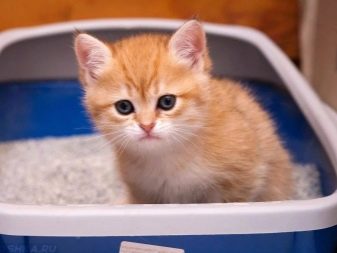

The cat will need a bed and toys. Moreover, after purchasing various things, you must constantly use them. A cat quickly gets bored of playing with objects without another animal or person. With a Briton, you need to constantly communicate and spend a lot of time.
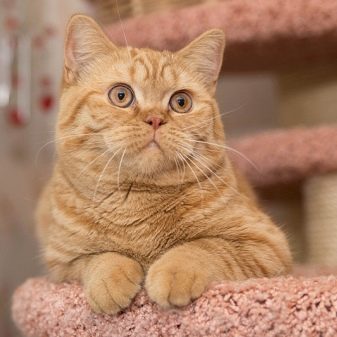
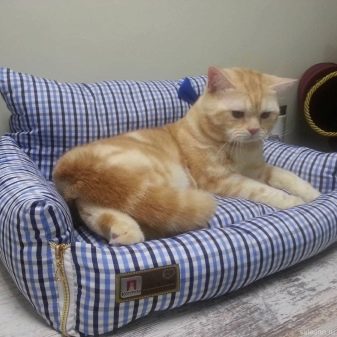
The most significant drawback of the British cat is profuse molt at least 2 times a year. Because of this, the pet needs careful grooming. Cats need to be brushed once a week. The number of procedures increases with the arrival of winter, as in cold weather the cat's hair begins to grow rapidly. It is recommended to comb the animal every day.
The British don't like bathing but to maintain the health of the coat, it is necessary to arrange washing at least 2 times every 6 months... During the bath, care must be taken to ensure that no water gets into the ears or eyes. To do this, hold the pet by the base of the neck. You will need to buy special shampoos for animals with soft hair. Never use a hair dryer to dry.
To prevent a lump of wool that gets inside the pet during self-washing, does not lead to a digestive upset, you can use special pastes. The tool easily removes hair from the body without harm to the pet.Plaques in the ears and around the eyes should be wiped with cotton swabs or napkins, previously moistened with hydrogen peroxide. Kittens need to wipe their eyes every day - small pets are characterized by increased tearing.
You should regularly check your pet's nails for fungal infections. To reduce the risk of developing diseases, you should take your cat every year to get vaccinated. It is necessary to carry out deworming every 3 months. One of the procedures to eliminate parasites should be done 10 days before vaccination.
Vaccination and deworming are carried out only in healthy pets.
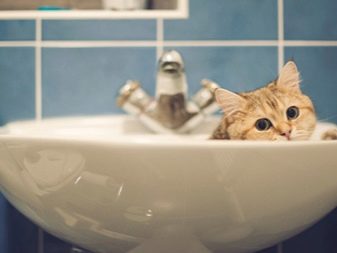
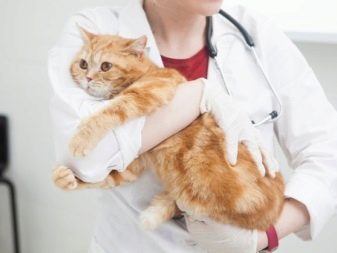
Feeding
It is forbidden for cats to give food prepared for humans. For good nutrition of your pet, you can purchase dry food or prepare food from natural ingredients. In this case, it is recommended to determine the type of diet - the alternation of dry and natural food can lead to an eating disorder.
When buying store products, the owner provides the cat with all the necessary vitamins and minerals, but the pet needs more water to absorb them. It is recommended that you purchase premium and super premium products to provide your cat with high quality food and not worry about possible digestive problems. The water in the bowl should be changed every morning. Do not fill the container from the tap.
If it was decided to prepare food for the pet yourself, you must take into account the age of the Briton. Kittens need to eat at least 4 times a day in small portions. Their diet should include the following ingredients:
- meat products - lean parts of beef, poultry;
- fermented milk products (milk is prohibited): cottage cheese, cream, kefir and sour cream;
- lean fish fillet only once a week;
- raw quail eggs;
- boiled chicken egg yolk;
- grated or boiled vegetables - cabbage, carrots, herbs;
- cereal porridge.

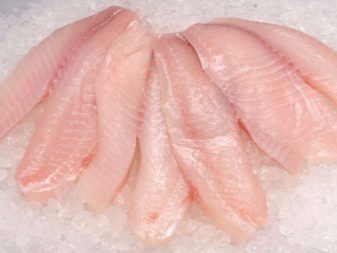
Meat can be given to your pet in the form of raw minced meat or boiled parts. To avoid being affected by helminths, you must first freeze the product or disinfect it with boiling water. For a balanced diet, you should add vitamins to your pet's food. It is strictly forbidden to give offal in the form of skins, skins or paws to them.
From 6 to 8 months, you should limit the number of meals to 3 times a day. An adult Briton should eat 150-300 g of food 2 times a day. The basis of the diet should be meat, to which vegetables or cereals are added as a side dish. Fermented milk products for calcium replenishment are not prohibited.
During pregnancy, the cat needs more minerals. For this reason, the female consumes 2 times more fermented milk products.
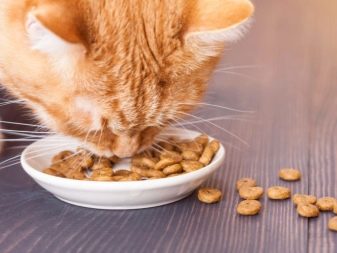
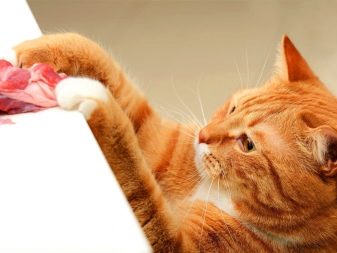
Breeding
Puberty in British cats occurs at the age of 10 months. The readiness for breeding is indicated by the increased excitability of the pet: the animal often screams, begins to scratch furniture, and can bite. During this period, the owner is faced with a difficult choice: to sterilize the pet or give him the opportunity to continue his race. In some cases, sedatives in the form of drops help. Sedatives can be given to a pet at the age of 1 year, 7-14 days before the onset of mating season.
The first copulation should take place no earlier than the pet turns 1.5 years old. Until this time, the body of cats continues to develop. Mating before reaching 1.5 years can lead to severe pregnancy and childbirth in females, the birth of weak kittens, and in cats - to erectile dysfunction.
Mating is carried out on average for 2-3 years of a pet's life:
- the cat must be brought to the territory of the domestic cat and given time to adapt to the new conditions within 3-4 days;
- after getting used to it, the cat will let the cat come to him and give him the opportunity to sniff himself;
- it is more effective to arrange a mating for 2-3 days after the onset of estrus.
The potential partner of the pet must be vaccinated and healthy.Cats are not recommended to be allowed near young cats, as they can harm them. It is important to remember that non-castrated cats actively mark their territory. Because of this feature, the apartment begins to smell of urine unpleasant.
You can sterilize a pet no earlier than 10 months. During this period, the reproductive system is fully formed, and the presence of sex hormones in the blood is no longer required. Castration or sterilization should be carried out before the first mating so that the animal does not succumb to instinct, otherwise the cat will continue to scream and go for walks to find a potential sexual partner.
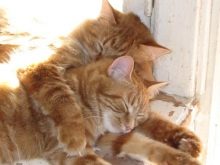
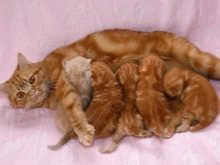
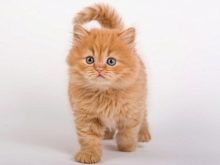
Diseases
Despite a strong immune system, if not kept properly, a cat can face certain diseases.
- Obesity. Excess weight appears in conditions of physical inactivity against the background of abundant nutrition, excessive consumption of fatty and protein foods. To get rid of body fat, you should play more with the cat, let the pet go for walks, and adjust the diet.
- Nail fungus. Timely clipping of the claws and constant care of their condition will help prevent the disease.
- Hair loss. Allergy or damage to internal organs can provoke molting.
- Dental calculus. As a preventive measure, you can periodically give your pet dry food. It is necessary to monitor the oral hygiene of the cat: brush her teeth. If symptoms of tartar appear (bleeding gums, increased salivation, putrid smell from the mouth), you will need the help of a veterinarian. If left untreated, your pet will begin to lose its teeth.
- Eye irritation. Reddening of proteins indicates the development of an allergic reaction, injury, or the appearance of conjunctivitis. For this reason, the cat needs the help of a veterinarian - a specialist will prescribe eye drops.
- Gastrointestinal Disorders. It is necessary to monitor the quality of food and the condition of the cat. If the pet is lethargic, you should pay attention to its stool. There may be blood clots in the feces, which indicate the development of internal bleeding. Various parasites can enter the cat's body with food.

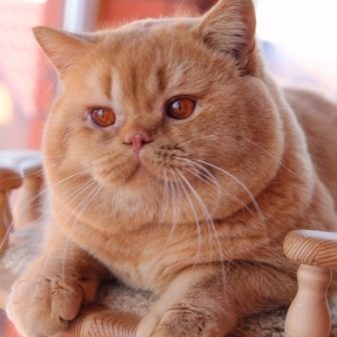
Of the inherited diseases, hypertrophic cardiomyopathy stands out. In such a situation, it is recommended to neuter the cat in order to reduce the risk of developing such a pathology in kittens. In elderly individuals, urolithiasis, distemper, and calcivirosis may develop.
Most diseases can be cured with medication or surgery.
For British Shorthair cats, see below.
































